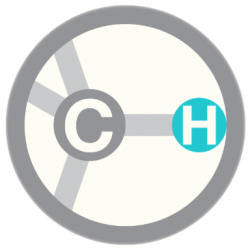Authors: S. E. Hemby, I. Lucki, G. Gatto, A. Singh, C. Thornley, J. Matasi, N. Kong, J. E. Smith, H. M. L. Davies and S. I. Dworkin
J. Pharmacol. Exp. Therap.,
1997, 282, 2, 727-733
The forced swimming test (FST) predicts the efficacy of clinically effective antidepressants. In the present study, using the FST we examined the antidepressant potential of three novel tropane analogs: 8-methyl-2β-propanoyl-3β-(4-(1-methylethyl)- phenyl)-8-azabicyclo[3.2.1] (WF-31) and 2β-propanoyl-3β-(4(1-methylethyl)phenyl)-8-azabicyclo[3.2.1]octane (WF-50), selective inhibitors of serotonin uptake, and 8-methyl-2β-propanoyl-3β-(4-(1-methylphenyl)-8-azabicyclo[3.2.1] octane (PTT, WF-11), a selective inhibitor of dopamine uptake. Fluoxetine and GBR 12909 were used as controls for selective inhibitors of serotonin and dopamine, respectively. Drugs were administered three times in a 24-hr period between pretest and test sessions. Intraperitoneal administration of WF-31 (0.1–10.0 mg/kg), WF-50 (0.3–10.0 mg/kg) and fluoxetine (0.3–10.0 mg/kg) dose-dependently decreased immobility while increasing swimming. In contrast, WF-11 (0.3–3.0 mg/kg) dose-dependently decreased immobility and increased both swimming and climbing, whereas GBR 12909 (3.0–30.0 mg/kg) decreased immobility, increased climbing but did not affect swimming. In a separate experiment, WF-11 (1.0 mg/kg) increased locomotor activity, whereas a higher dose of WF-11 (3.0 mg/kg) and GBR-12909 (30.0 mg/kg) produced stereotypic behaviors, suggesting that the effects in the FST may have been attributable to increases in general activity. However, the effects of WF-11 on swimming in the FST indicate that WF-11 produces antidepressant-like effects in addition to motor stimulation. These results confirm previous results that behavioral patterns manifested in the FST are characteristic of specific monoamine uptake inhibitors. In addition, these results demonstrate that WF-31 and WF-50 produce behavioral patterns similar to fluoxetine in the FST without accompanying decreases in motor activity, suggesting a potential antidepressant action. Based on comparisons with fluoxetine, the data suggest WF-31 and WF-50 may be therapeutically useful as potential antidepressant medications.

